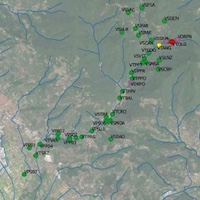Technical Reports
30 September 2020
Vol. 9 No. 3 (2020)
The groundwater monitoring system in Tuscany according to the EU Directive 2000/60 and the groundwater As contamination in the Versilia coastal plain

Publisher's note
All claims expressed in this article are solely those of the authors and do not necessarily represent those of their affiliated organizations, or those of the publisher, the editors and the reviewers. Any product that may be evaluated in this article or claim that may be made by its manufacturer is not guaranteed or endorsed by the publisher.
All claims expressed in this article are solely those of the authors and do not necessarily represent those of their affiliated organizations, or those of the publisher, the editors and the reviewers. Any product that may be evaluated in this article or claim that may be made by its manufacturer is not guaranteed or endorsed by the publisher.
573
Views
393
Downloads














